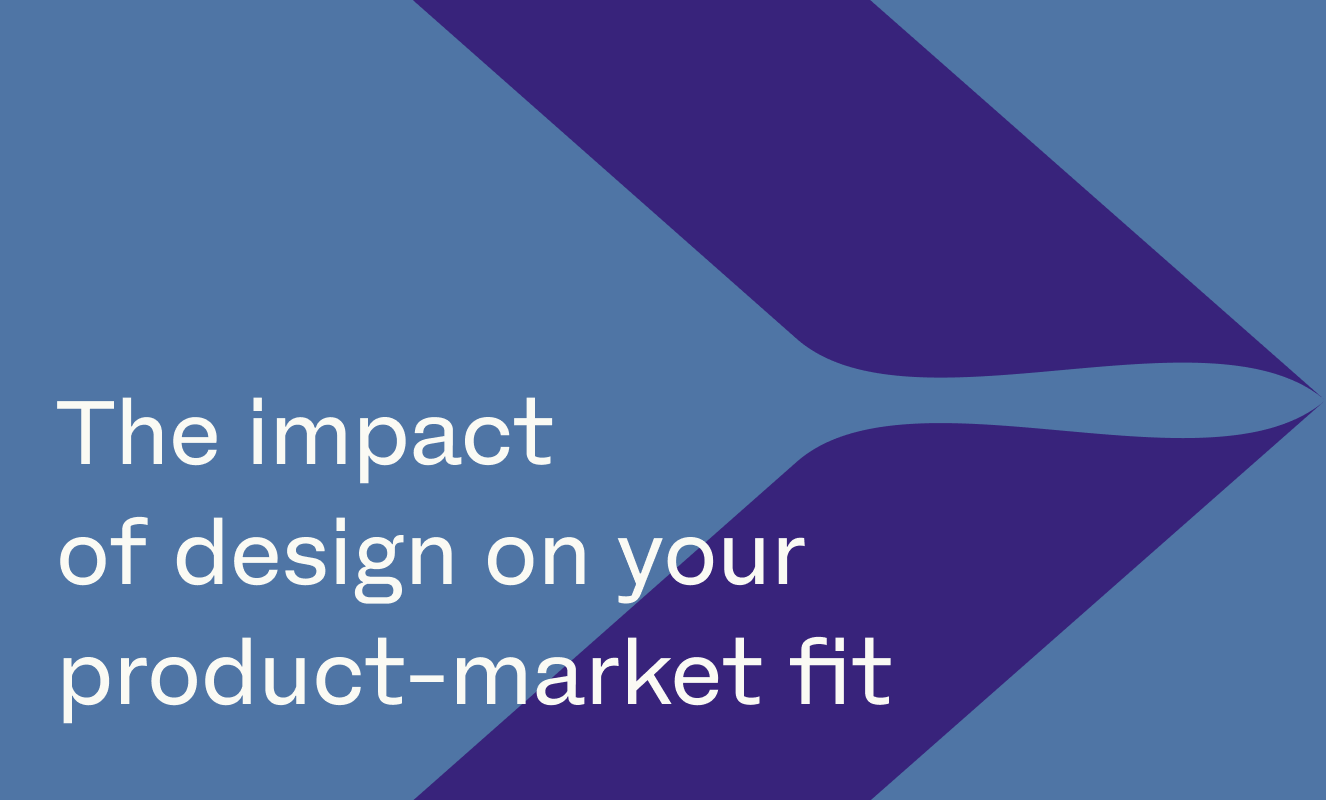17 November 2023
The impact of design on your product-market fit
When brainstorming ideas for the digital product that will set your brand apart, it's common to get swept up in the excitement, aiming to quickly reach the Minimum Viable Product (MVP) stage and market launch. But this is the exact point where you need to take a long, deep breath and think about how the product will fit in your marketplace and with your customers. Finding the perfect alignment between your product and the market is the ultimate goal. This synergy, known as product-market fit (PMF) validation is the sweet spot at the centre of meeting various user requirements, growing your digital portfolio and scaling your business sustainably. This article will explore how design fits into this equation and why is it more than just about the aesthetics of your product. Let’s take a look at the impact of design strategy on your product market fit.
Filters

Understanding Product-Market Fit (PMF) vs. idea validation
These two concepts both have their place in the design strategy proces - but understanding the distinction is crucial. Idea validation signifies interest; people expressing a willingness to buy. PMF, on the other hand, signifies real traction—where not only interest but actual purchases and product usage occur. It’s the shift from conceptual appeal to tangible market success, marking the difference between potential and genuine impact. In startup scenarios, validating Product-Market Fit (PMF) is crucial, transforming theoretical interest into tangible revenue. Design, particularly User Experience (UX) and User Interface (UI), transcends aesthetics by integrating user needs, business objectives and technical viability. This holistic approach ensures products seamlessly integrate into users' lives, effectively addressing problems and enhancing experiences. Design is a multifaceted process that identifies significant user issues and solves them while considering business viability. The result: solutions that are useful, usable, beautiful and economically viable. UX/UI Designers utilise design thinking, understanding both user needs and business goals to craft innovative, user-centred solutions, ensuring a well-balanced approach.
Advantages of a comprehensive design strategy:
Design strategy at its core aligns with a company's vision and business goals, emphasising authentic problem-solving based on user needs. It creates tangible value for customers, enhancing satisfaction and fostering innovation. Integrating these principles into a startup's foundation ensures genuine product-market fit, making products indispensable in the market.
Miyagami’s process
Here’s a high-level description of the process we follow at Miyagami to ensure your designs are aligned with your product market fit.
Product strategy
Our approach to product strategy involves a meticulous process geared towards achieving optimal product-market fit through thoughtful design. Before diving into strategy, we conduct comprehensive sessions with clients to define business goals, identify and address challenges, assess competition and identify target demographics.
Crafting your product stragtegy transforms concepts into reality. Collaborating closely with you, we prioritise objectives, challenge assumptions, explore opportunities and devise a comprehensive plan to bring your product seamlessly from ideation to fruition. Whether your business requires a digital transformation, idea clarification, or innovation realisation, our custom software ensures optimal outcomes and a digital portfolio that gives you a competitive edge.
UX research
Our design process begins with UX research, a foundational step that helps ensure a good product-market fit. Through meticulous user research, our designers delve deep into users' lives, unravelling their needs, preferences and pain points. This stage is essential in identifying the core problems that need solving, ensuring that the subsequent design process is rooted in genuine user insights making sure that the products not only capture attention but also offer meaningful solutions.
Ideation
Ideation at Miyagami is not just a brainstorming session; it’s a creative process rooted in understanding user experiences. Armed with insights from UX research, our designers engage in structured idea generation. By putting themselves in the users’ shoes, they explore diverse solutions to the identified problems. This ensures that the creative energy is channelled towards addressing real user needs, a vital component in achieving a genuine product-market fit.
Prototyping
Our prototypes go beyond placeholders, becoming functional models of envisioned products. Through prototyping our designers create tangible, interactive models, allowing real-time user feedback. This iterative approach refines designs, aligning products closely with user expectations and market demands.
High-fidelity prototypes
Our journey culminates in high-fidelity prototypes. These prototypes embody our design vision and incorporate user feedback. Through iterative refinement, every element is fine-tuned, ensuring seamless interactions and visually appealing interfaces. These prototypes aren't just designs; they're user-centric solutions that seamlessly fit into your market.
Testing and iteration
At Miyagami, our rigorous testing and iteration process form the core of our product development. We implement thorough testing protocols at each stage, focusing on functionality, usability and resilience. User feedback is integral to our iterative approach, enabling us to identify strengths and weaknesses for refinement. This continuous loop ensures our products become more intuitive and effective over time. We strike a balance between innovation and user-friendliness, ensuring our solutions are cutting-edge and genuinely user-centred.
Over to you…
If you are interested in developing solutions that really make an impact, please contact us.



